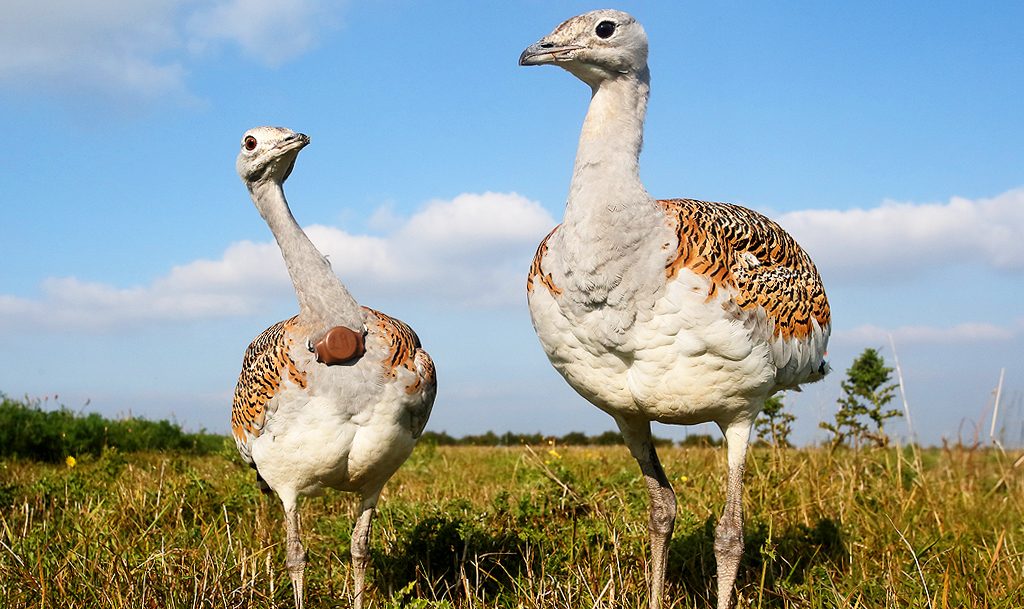Heaviest Flying Birds in the World: A Guide to Their Features
When you think of birds, you might picture delicate creatures with feathers and hollow bones, effortlessly soaring through the skies. But some birds defy this image with their impressive size and weight, yet still manage to take flight. These remarkable creatures, ranging from 22 to 44 pounds, challenge the limits of gravity and redefine what it means to be a flying bird.
Among the heaviest flying birds, you’ll find species like vultures, bustards, and swans, each boasting wingspans that dwarf human height. Imagine the Wandering Albatross, with a wingspan stretching over 12 feet, gracefully navigating the skies. It’s fascinating to consider how evolution has equipped these birds with the necessary adaptations to conquer the air despite their hefty frames.
As you explore the world of these avian giants, you’ll gain a deeper appreciation for the incredible diversity and adaptability of nature’s winged wonders.
Key Takeaways
- Impressive Adaptations: Despite their significant weight, birds like the Great Bustard, Kori Bustard, and Andean Condor exhibit remarkable adaptations that allow them to achieve powered flight, demonstrating nature’s ingenuity in balancing mass and flight capabilities.
- Diverse Species: The heaviest flying birds encompass a variety of species, including swans, vultures, pelicans, and albatrosses, each showcasing unique adaptations and ecological roles, from scavenging to seed dispersal.
- Evolutionary Significance: Heavy flying birds possess wide wingspans and robust musculature that contribute to their ability to soar and glide over vast areas, highlighting evolutionary traits that enable them to efficiently manage energy expenditure during flight.
- Ecological Importance: These birds play vital roles in their ecosystems, such as scavenging, seed dispersal, and maintaining plant diversity, contributing to the ecological balance and health of their habitats.
- Conservation Challenges: Many of the heaviest flying birds face threats from habitat destruction, hunting, and climate change, emphasizing the need for comprehensive conservation efforts, including habitat protection and community engagement, to ensure their survival.
Overview of Heaviest Flying Birds
When you think of flying birds, large sizes may not immediately come to mind. Yet, some birds push the boundaries of weight and defy gravity nonetheless. These aren’t your typical flightless giants like the Ostrich; these are birds conquering the skies with substantial weight.
Great Bustard
The Great Bustard (Otis tarda) holds the title as one of the heaviest flying birds. Males can weigh up to 44 lbs (20 kg), with some specimens reaching up to 46 lbs (21 kg). Despite this, their impressive wingspans enable them to achieve flight.
Kori Bustard
The Kori Bustard (Ardeotis kori) rivals its cousin, weighing between 24-42 lbs (11-19 kg). Some reported males have hit weights as high as 88 lbs (40 kg), toggling on the edge of the lift-off limits for horizontal powered flight.
Dalmatian Pelican
You can find the Dalmatian Pelican (Pelecanus crispus) among the heaviest flying. Weighing between 16-33 lbs (7.25-15 kg), it boasts a substantial build for flight, supported by robust wing muscles.
Andean Condor
The Andean Condor (Vultur gryphus) is the largest bird of prey, carrying up to 33 lbs (15 kg). Its wingspan of up to 10 feet facilitates soaring over the Andes, effortlessly gliding on air currents.
| Bird | Weight Range (lbs) | Weight Range (kg) |
|---|---|---|
| Great Bustard | 44-46 | 20-21 |
| Kori Bustard | 24-88 | 11-40 |
| Dalmatian Pelican | 16-33 | 7.25-15 |
| Andean Condor | Up to 33 | Up to 15 |
These remarkable creatures illustrate nature’s adaptability. Their flight defies common perceptions of avian limitations, reinforcing the fascinating diversity among flying species.
Top Heaviest Flying Birds
In the realm of avian giants, certain species defy the gravitational limits associated with their size. These birds, with their considerable mass, exhibit astounding adaptations that allow them to soar through the skies.
Great Bustard
Boasting an impressive wingspan of 7-8 feet (2.1-2.5 meters), the Great Bustard is amongst the heaviest flying birds. It can weigh up to 46 lbs (21 kg). Native to Europe and Central Asia, this bird exemplifies nature’s ability to balance significant weight with the mechanics of flight.
Kori Bustard
The Kori Bustard rivals its relative, the Great Bustard, in terms of weight, ranging from 24-88 lbs (11-40 kg). Located in eastern and southern African grasslands, its size often approaches the limits of powered flight. Their diet includes plants, berries, snakes, and lizards, offering a glimpse into their adaptability.
Great Indian Bustard
With only about 200 individuals remaining, the critically endangered Great Indian Bustard weighs between 13-40 lbs (6-18 kg). Found in the Indian subcontinent’s grasslands, conservation efforts are crucial for this species’ survival, considering its dwindling numbers.
Trumpeter Swan
The Trumpeter Swan, North America’s heaviest waterfowl, weighs up to 30 lbs (13.6 kg). Its vast wingspan and graceful flight highlight the exceptional ability of nature to sustain large-body birds in flight without compromising elegance.
Mute Swan
Often found gliding on calm lakes, the Mute Swan can occasionally outweigh the Great Bustard. Weighing up to 33 lbs (15 kg), its serene presence is complemented by remarkable strength and endurance.
Whooper Swan
Known for its clear whooping calls, the Whooper Swan weighs up to 31 lbs (14 kg). It’s found across northern Europe and Asia, with migratory patterns that underscore the incredible endurance of heavy flying birds.
Andean Condor
Regarded as the largest bird of prey, the Andean Condor soars with a wingspan of up to 10 feet (3 meters) and weighs up to 33 lbs (15 kg). Often seen gliding effortlessly across the South American Andes, its flight energy is efficiently conserved through thermal air currents.
Dalmatian Pelican
This pelican species, with robust wing muscles, weighs between 16-33 lbs (7-15 kg). Its habitats span from Europe to Asia, showcasing its adaptability and range. The striking combination of weight and wingspan enables dynamic takeoffs and landings.
Cinereous Vulture
The Cinereous Vulture, a prominent scavenger, can weigh up to 31 lbs (14 kg). It patrols the skies across Europe and Asia, relying on heightened vision to fulfill its ecological role within its ecosystem.
Himalayan Vulture
With altitudinal ranges extending across the Himalayan peaks, this vulture can weigh up to 29 lbs (13 kg). Its existence amidst rugged terrains unveils the adaptability of heavy birds in extreme environments.
Wandering Albatross
A symbol of endurance, the Wandering Albatross maintains a wingspan over 12 feet (3.7 meters), allowing long-haul flights across oceans. This bird embodies the stunning confluence of weight and aerodynamic efficiency.
These remarkable species highlight the incredible variety and adaptability within the avian world, each overcoming formidable challenges to remain true masters of the skies.
Factors Contributing to Bird Heaviness
Understanding what makes some birds heavier helps in appreciating their incredible adaptations for flight. These factors include unique anatomical features and evolutionary adaptations.
Wing Structure and Body Mass
Wing structure affects a bird’s ability to remain airborne, despite its heaviness. Most heavy flying birds possess broad wings with a large surface area, like the Andean Condor with its wingspan of up to 10 feet, maximizing lift. Their robust wing bones and dense musculature contribute to both strength and mass, allowing sustained flight through powerful wingbeats.
Body mass, distributed strategically, aids balance and flight efficiency. For instance, the Great Bustard’s males, weighing up to 44 lbs, have evolved with compact bodies and heavy sternums to support strong flight muscles. This balance between wing structure and body mass is crucial for their aerial capabilities.
Adaptations for Flight
Adaptations for flight are essential for heavy birds to defy gravity. Large birds like the Dalmatian Pelican, weighing up to 33.1 lbs, have optimized their flight through specific evolutionary changes. They possess robust pectoral muscles that enhance their wingbeats, essential for lifting their substantial body mass.
Moreover, heavy birds often adopt gliding and soaring techniques to conserve energy. Riding thermal air currents, like the Wandering Albatross with its vast wingspan, reduces the need for constant flapping, enabling long-distance travel without expending excessive energy. This adaptation allows these birds to capitalize on environmental conditions, ensuring they can glide over vast areas with minimal energy output.
These factors, wing structure with body mass distribution and flight adaptations, enable heavy birds to master the skies, showcasing nature’s ingenuity in evolution.
Significance and Conservation
The role of the heaviest flying birds extends beyond their impressive physical characteristics and into vital ecological functions. For instance, vultures like the Andean Condor and the Cinereous Vulture are essential scavengers in ecosystems. They help clean up animal carcasses, effectively preventing the spread of diseases. Without these birds, ecosystems would face challenges in managing animal remains, leading to potential health risks for other species, including humans.
Large birds such as the Great Bustard and the Kori Bustard influence their respective habitats by participating in seed dispersal and maintaining plant diversity, ensuring that their environments remain vibrant and sustainable. By feeding on various seeds and then distributing them over wide areas, these birds encourage plant growth and contribute to the health of their ecosystems.
However, the conservation of these remarkable birds faces significant challenges. Habitat destruction, hunting, and climate change pose threats across their natural ranges. The Great Indian Bustard, for example, is critically endangered, with habitat loss being a primary factor in its decline. Conservation efforts focus on protecting habitats, enforcing hunting regulations, and raising awareness about the importance of preserving these species.
Efforts include habitat restoration and legal protection measures to safeguard essential ecosystems for these birds. In regions like the Andes, where the Andean Condor resides, local conservation programs involve communities in monitoring and protecting nesting sites. By engaging with local communities and promoting sustainable practices, these programs aim to secure a stable future for the heaviest of flying birds.
Additionally, understanding the unique anatomical adaptations of these birds helps conservationists devise better strategies for their protection. By studying their flight mechanics and ecological roles, scientists can inform conservation policies, ensuring these birds continue to soar for generations to come.
Conclusion
Exploring the world of the heaviest flying birds reveals the incredible adaptability and diversity of avian life. These magnificent creatures defy expectations by soaring through the skies despite their substantial weight. Their unique adaptations, from broad wings to powerful muscles, enable them to master the art of flight.
Beyond their physical prowess, these birds play crucial ecological roles and face significant conservation challenges. By understanding their needs and threats, you can contribute to efforts that ensure their survival. Embrace the wonder of these remarkable birds and support initiatives that protect their habitats and promote biodiversity.







